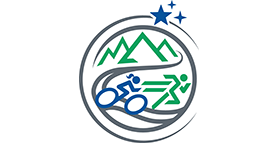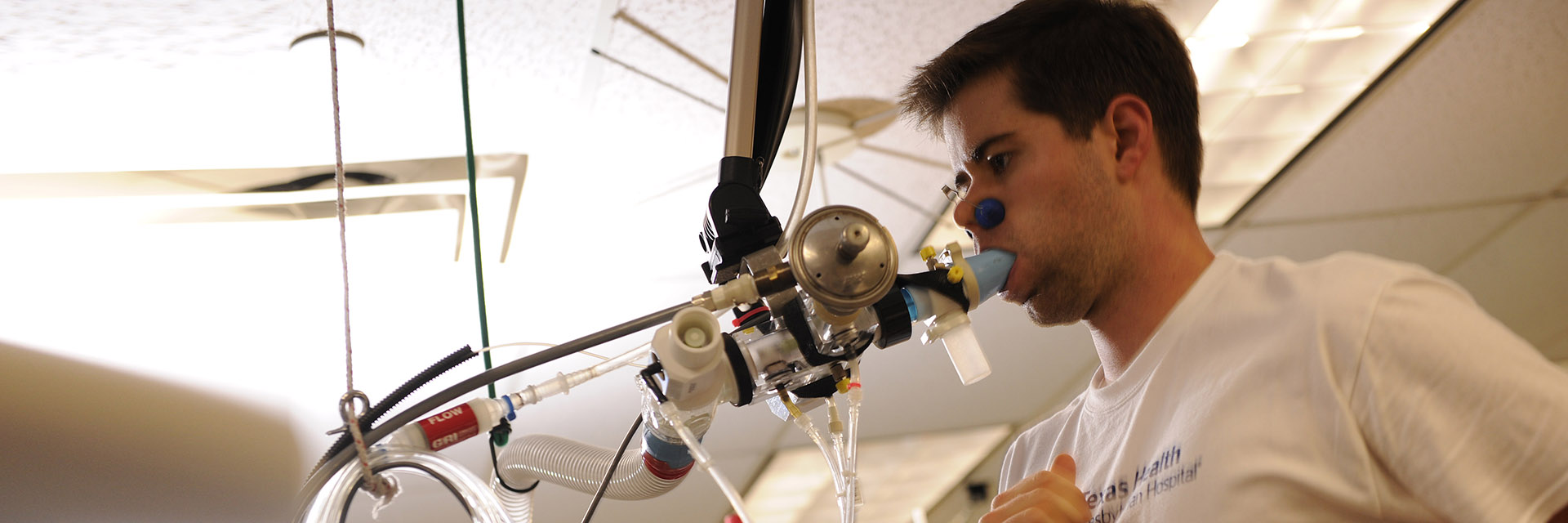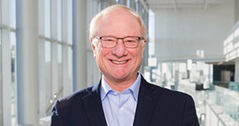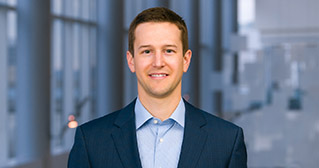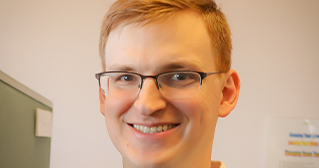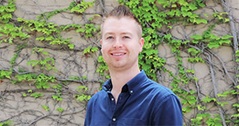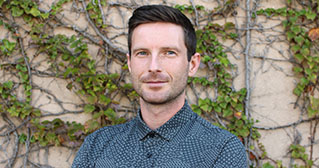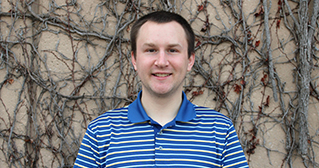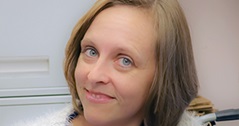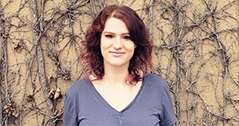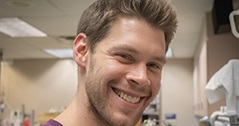Cardiovascular Physiology Autonomic Function Laboratory
The global focus of the Cardiovascular Physiology Autonomic Function Laboratory is to examine the adaptive capacity of the circulation.
- Dr. Levine studies the effects of exercise training, bed rest deconditioning, spaceflight, high altitude, aging, and the effects of cardiovascular diseases, such as heart failure.
- By using sophisticated tools to assess cardiovascular structure and function, Dr. Levine and his research team bring "Olympic" and "space age" science to the solution of common clinical problems such as fainting, hypertension, or patients with shortness of breath.
- The Cardiovascular Physiology Autonomic Function Laboratory focuses on measuring how the cardio-respiratory system distributes oxygen from the environment to the muscles.
- Our facility is one of the few labs in the world that can measure the limitations to exercise capacity at every step along the "oxygen cascade" - including the lungs, heart and muscles.
- We use invasive and non-invasive tools to assess cardiovascular structure and function, as well as circulatory control mechanisms.
Interests
The Impact of atrial fibrillation on exercise performance in patients with HFpEF (Heart failure with preserved ejection fraction)
- About half of all elderly patients with a diagnosis of congestive heart failure have seemingly normal systolic function, so called ‘Heart failure with a preserved ejection fraction” or HFpEF.
- A common condition that these patients also have is atrial fibrillation (AF), with approximately two-thirds developing AF over the course of their disease.
- The contribution of Atrial fibrillation to shortness of breath with exertion is unclear. However, we hypothesize that patients with HFpEF and atrial fibrillation have markedly impaired aerobic capacity and exercise hemodynamics when in atrial fibrillation, compared to sinus rhythm.
Mechanisms of Exercise Intolerance in Heart Failure with Preserved Ejection Fraction (HFpEF)
- This multi-factorial condition, also called “diastolic heart failure” is associated with several abnormalities in diastolic function including increased chamber stiffness, impaired relaxation and impaired ventriculo-arterial coupling.
- To date, there is no consensus on the key physiologic pathways that cause this type of heart failure.
- Dr. Levine’s lab seeks to find out what causes exercise intolerance and shortness of breath (dyspnea) on exertion in these patients, and if specific exercise programs (whole body vs. single leg) will result in improved exercise tolerance.
Synchronizing Cardiac Cycle Phase with Foot Strike to Optimize Left Ventricular performance in Patients with Advanced Heart Failure and Cardiac Resynchronization Therapy (CRT)
- Cardiac resynchronization therapy involves the insertion of electrodes in the left and right ventricles of the heart, as well as on occasion the right atrium, to treat heart failure by coordinating the function of the left and right ventricles via a pacemaker. The pacemaker controls the timing of the upper heart chambers (atria) to the lower heart chambers (ventricles)
- The investigators are curious about the effects of gait and cardiac cycle phase synchronization on muscle oxygenation, cardiac function and exercise performance in patients who have advanced heart failure and who have a CRT pacemaker.
- Subjects will walk on a treadmill for several short sessions; some of the sessions will include walking/stepping to an auditory tone. The auditory tone will attempt to synchronize to the patient’s heartbeat.
Safe and Effective Countermeasures to Reduce Intracranial Pressure (ICP) and Ameliorate Visual Impairment in Astronauts;
- Current estimates suggest that up to 60% of astronauts report degraded visual acuity during short and long duration space flights.
- Findings suggest ocular remodeling, which are consistent with signs and some symptoms reported in patients with increased intracranial pressure
- In previous studies performed by Dr. Levine and his research team, we have demonstrated that the use of lower body negative pressure (LBNP) at -20 mmHg for 8 hours/day while in deep down head tilt restored circadian variability in ICP and prevented the expansion or thickening of choroid.
Current Projects
- Synchronizing cardiac cycle phase with Foot Strike to Optimize LV Performance in Patients with Advanced Heart Failure and Cardiac Resynchronization Therapy
- Mechanisms of Exercise Intolerance in Heart Failure with Preserved Ejection Fraction: ‘Precision’ Therapy Based on Patient Specific Pathophysiology
- Efficacy of High Intensity Exercise (HIE) for Increasing Cardiorespiratory Fitness in Patients with Hypertrophic Cardiomyopathy (HCM)
Current Research Opportunities
View our current research opportunities for:
- Synchronizing cardiac cycle phase with foot strike to optimize LV performance in patients with advanced heart failure and cardiac resynchronization therapy (CRT)
- High Intensity Exercise for Increasing Cardiorespiratory Fitness in Patients with Hypertrophic Cardiomyopathy
Media
Dr. Levine explains how his research with astronauts, whose physiology is affected by the lack of gravity, led to research on the circulation of the bed-ridden and elite rowers. He describes how exercise can help aid recovery from disease and the effects of space-flight at the March 2012 meeting, "The Biomedical Basis of Elite Performance," hosted by the Physiological Society, in partnership with the British Pharmacological Society and Wiley-Blackwell, and sponsored by the Gatorade Sports Science Institute.
WATCH NOW:
UTSW collaborates with U.S. Paralympic Swimming on study
WATCH NOW:
The Biomedical Basis of Elite Performance: Ben Levine interview
-
Principal Investigators
-
Postdoctoral Fellows / Residents
-
Staff
-
Cardiovascular response to exercise training in the systemic right ventricle of adults with transposition of the great arteries
Cardiovascular response to exercise training in the systemic right ventricle of adults with transposition of the great arteries. Shafer KM, Janssen L, Carrick-Ranson G, Rahmani S, Palmer D, Fujimoto N, Livingston S, Matulevicius SA, Forbess LW, Brickner B, Levine BD. J Physiol. 2015 Jun 1;593(11):2447-58.
-
Continuous-Flow Circulatory Support
Watch Now:
Continuous-Flow Circulatory Support: The Achilles Heel of Current-Generation Left Ventricular Assist Devices? Cornwell WK 3rd, Urey M, Drazner MH, Levine BD. Circ Heart Fail. 2015 Sep;8(5):850-2. -
Effect of pulsatile and nonpulsatile flow on cerebral perfusion in patients with left ventricular assist devices
Effect of pulsatile and nonpulsatile flow on cerebral perfusion in patients with left ventricular assist devices. Cornwell WK 3rd, Tarumi T, Aengevaeren VL, Ayers C, Divanji P, Fu Q, Palmer D, Drazner MH, Meyer DM, Bethea BT, Hastings JL, Fujimoto N, Shibata S, Zhang R, Markham DW, Levine BD.
J Heart Lung Transplant. 2014 Dec;33(12):1295-303. -
Elevated exercise blood pressure in middle-aged womenElevated exercise blood pressure in middle-aged women is associated with altered left ventricular and vascular stiffness. Sarma S, Howden E, Carrick-Ranson G, Lawley J, Hearon C, Samels M, Everding B, Livingston S, Adams-Huet B, Palmer MD, Levine BD. J Appl Physiol (1985). 2020 May 1;128(5):1123-1129.
-
Exercise Training for Patients
Exercise Training for Patients With Hypertrophic Cardiomyopathy: JACC Review Topic of the Week. Dias KA, Link MS, Levine BD. J Am Coll Cardiol. 2018 Sep 4;72(10):1157-1165.
-
Females have a blunted cardiovascular response to intensive endurance training
Females have a blunted cardiovascular response to one year of intensive supervised endurance training. Howden EJ, Perhonen M, Peshock RM, Zhang R, Arbab-Zadeh A, Adams-Huet B, Levine BD.
J Appl Physiol (1985). 2015 Jul 1;119(1):37-46. -
Heart rate recovery after maximal exercise is blunted in hypertensive seniorsHeart rate recovery after maximal exercise is blunted in hypertensive seniors. Best SA, Bivens TB, Dean Palmer M, Boyd KN, Melyn Galbreath M, Okada Y, Carrick-Ranson G, Fujimoto N, Shibata S, Hastings JL, Spencer MD, Tarumi T, Levine BD, Fu Q. J Appl Physiol (1985). 2014 Dec 1;117(11):1302-7.
-
Impact of lifelong exercise "dose" on left ventricular compliance and distensibility
Impact of lifelong exercise "dose" on left ventricular compliance and distensibility. Bhella PS, Hastings JL, Fujimoto N, Shibata S, Carrick-Ranson G, Palmer MD, Boyd KN, Adams-Huet B, Levine BD.
J Am Coll Cardiol. 2014 Sep 23;64(12):1257-66. -
Mechanisms of Chronotropic Incompetence in Heart FailureMechanisms of Chronotropic Incompetence in Heart Failure with Preserved Ejection Fraction. Sarma S, Stoller D, Hendrix J, Howden E, Lawley J, Livingston S, Adams-Huet B, Holmes C, Goldstein DS, Levine BD. Circ Heart Fail. 2020 Mar;13(3).
-
Patients with heart failurePatients with heart failure with reduced ejection fraction have exaggerated reductions in cerebral blood flow during upright posture. Cornwell WK 3rd, Levine BD. JACC Heart Fail. 2015 Feb;3(2):176-9.
-
Restoration of Pulsatile Flow Reduces Sympathetic Nerve ActivityRestoration of Pulsatile Flow Reduces Sympathetic Nerve Activity Among Individuals With Continuous-Flow Left Ventricular Assist Devices. Cornwell WK 3rd, Tarumi T, Stickford A, Lawley J, Roberts M, Parker R, Fitzsimmons C, Kibe J, Ayers C, Markham D, Drazner MH, Fu Q, Levine BD. Circulation. 2015 Dec 15;132(24):2316-22.
-
Reversing the Cardiac Effects of Sedentary Aging in Middle Age-A Randomized Controlled Trial: Implications For Heart Failure PreventionReversing the Cardiac Effects of Sedentary Aging in Middle Age-A Randomized Controlled Trial: Implications For Heart Failure Prevention. Howden EJ, Sarma S, Lawley JS, Opondo M, Cornwell W, Stoller D, Urey MA, Adams-Huet B, Levine BD. Circulation. 2018 Apr 10;137(15):1549-1560.
-
Soothing the sleeping giantSoothing the sleeping giant: improving skeletal muscle oxygen kinetics and exercise intolerance in HFpEF. Sarma S, Levine BD. J Appl Physiol (1985). 2015 Sep 15;119(6):734-8.
-
The Cardiovascular Physiology of Sports and Exercise
The Cardiovascular Physiology of Sports and Exercise. Opondo MA, Sarma S, Levine BD. Clin Sports Med. 2015 Jul;34(3):391-404.
-
The effect of lifelong exercise dose on cardiovascular function during exercise
The effect of lifelong exercise dose on cardiovascular function during exercise. Carrick-Ranson G, Hastings JL, Bhella PS, Fujimoto N, Shibata S, Palmer MD, Boyd K, Livingston S, Dijk E, Levine BD. J Appl Physiol (1985). 2014 Apr 1;116(7):736-45.
-
The effect of rowing ergometry and resistive exercise on skeletal muscle structure and function during bed restThe effect of rowing ergometry and resistive exercise on skeletal muscle structure and function during bed rest. Krainski F, Hastings JL, Heinicke K, Romain N, Pacini EL, Snell PG, Wyrick P, Palmer MD, Haller RG, Levine BD. J Appl Physiol (1985). 2014 Jun 15;116(12):1569-81.
-
The international POTS registryThe international POTS registry: Evaluating the efficacy of an exercise training intervention in a community setting. George SA, Bivens TB, Howden EJ, Saleem Y, Galbreath MM, Hendrickson D, Fu Q, Levine BD. Heart Rhythm. 2016 Apr;13(4):943-50.
-
The impact of 2 years of high-intensity exercise training on a model of integrated cardiovascular regulationThe impact of 2 years of high-intensity exercise training on a model of integrated cardiovascular regulation. Hieda M, Howden EJ, Sarma S, Cornwell W, Lawley JS, Tarumi T, Palmer D, Samels M, Everding B, Livingston S, Fu Q, Zhang R, Levine BD. J Physiol. 2019 Jan;597(2):419-429.
-
Trimming the fat, do we know where to begin?
Trimming the fat, do we know where to begin? Sarma S, Levine BD. Circ Cardiovasc Imaging. 2014 Dec 30;8(1).
-
Exercise-Related Acute Cardiovascular Events
Exercise-Related Acute Cardiovascular Events and Potential Deleterious Adaptations Following Long-Term Exercise Training: Placing the Risks Into Perspective-An Update: A Scientific Statement From the American Heart Association. Franklin BA, Thompson PD, Al-Zaiti SS, Albert CM, Hivert MF, Levine BD, Lobelo F, Madan K, Sharrief AZ, Eijsvogels TMH; American Heart Association Physical Activity Committee of the Council on Lifestyle and Cardiometabolic Health; Council on Cardiovascular and Stroke Nursing; Council on Clinical Cardiology; and Stroke Council. Circulation. 2020 Mar 31;141(13):e705-e736.
-
A 20-year evolution of cardiac performance
A 20-year evolution of cardiac performance in microgravity in a male astronaut. Limper U, Moestl S, Tank J, Prisk GK, Heusser K, Hoffmann F, Goßmann A, Migeotte PF, Gauger P, Beck LEJ, Schlegel HW, Levine BD, Jordan J. Clin Auton Res. 2020 Jan 14.
-
Increased Myocardial Stiffness in Patients With High-Risk Left Ventricular Hypertrophy
Increased Myocardial Stiffness in Patients With High-Risk Left Ventricular Hypertrophy: The Hallmark of Stage-B Heart Failure With Preserved Ejection Fraction. Hieda M, Sarma S, Hearon CM Jr, Dias KA, Martinez J, Samels M, Everding B, Palmer D, Livingston S, Morris M, Howden E, Levine BD. Circulation. 2020 Jan 14;141(2):115-123.
-
Effect of acute and chronic xenon inhalation on erythropoietinEffect of acute and chronic xenon inhalation on erythropoietin, hematological parameters, and athletic performance. Dias KA, Lawley JS, Gatterer H, Howden EJ, Sarma S, Cornwell WK 3rd, Hearon CM Jr, Samels M, Everding B, Liang AS, Hendrix M, Piper T, Thevis M, Bruick RK, Levine BD. J Appl Physiol (1985). 2019 Dec 1;127(6):1503-1510.
-
Safety, hemodynamic effects, and detection of acute xenon inhalationSafety, hemodynamic effects, and detection of acute xenon inhalation: rationale for banning xenon from sport. Lawley JS, Gatterer H, Dias KA, Howden EJ, Sarma S, Cornwell WK 3rd, Hearon CM Jr, Samels M, Everding B, Bruick RK, Hendrix M, Piper T, Thevis M, Levine BD. J Appl Physiol (1985). 2019 Dec 1;127(6):1511-1518.
-
Impaired oxygen uptake kinetics in heart failure with preserved ejection fraction
Impaired oxygen uptake kinetics in heart failure with preserved ejection fraction. Hearon CM Jr, Sarma S, Dias KA, Hieda M, Levine BD. Heart. 2019 Oct;105(20):1552-1558.
-
Mechanisms of Left Atrial Enlargement in Obesity
Mechanisms of Left Atrial Enlargement in Obesity. Aiad NN, Hearon C Jr.,, Hieda M, Dias K, Levine BD, Sarma S. Am J Cardiol. 2019 Aug 1;124(3):442-447.
-
Plasma matrix metalloproteinases (MMPs) and tissue inhibitorsPlasma matrix metalloproteinases (MMPs) and tissue inhibitors of MMPs and aging and lifelong exercise adaptations in ventricular and arterial stiffness. Carrick-Ranson G, Spinale FG, Bhella PS, Sarma S, Shibata S, Fujimoto N, Hastings JL, Levine BD. Exp Gerontol. 2019 Aug;123:36-44.
-
Left Atrial Electromechanical Remodeling Following 2 Years of High-Intensity Exercise TrainingLeft Atrial Electromechanical Remodeling Following 2 Years of High-Intensity Exercise Training in Sedentary Middle-Aged Adults. McNamara DA, Aiad N, Howden E, Hieda M, Link MS, Palmer D, Samels M, Everding B, Ng J, Adams-Huet B, Opondo M, Sarma S, Levine BD. Circulation. 2019 Mar 19;139(12):1507-1516.
-
Impact of Lifelong Exercise Training Dose on Ventricular Arterial CouplingImpact of Lifelong Exercise Training Dose on Ventricular-Arterial Coupling. Hieda M, Howden E, Shibata S, Fujimoto N, Bhella PS, Hastings JL, Tarumi T, Sarma S, Fu Q, Zhang R, Levine BD. Circulation. 2018 Dec 4;138(23):2638-2647.
-
Lower body negative pressure to safely reduce intracranial pressure
Lower body negative pressure to safely reduce intracranial pressure. Petersen LG, Lawley JS, Lilja-Cyron A, Petersen JCG, Howden EJ, Sarma S, Cornwell WK 3rd, Zhang R, Whitworth LA, Williams MA, Juhler M, Levine BD. J Physiol. 2019 Jan;597(1):237-248.
-
Exercise and non-pharmacological treatment of POTSExercise and non-pharmacological treatment of POTS. Fu Q, Levine BD. Auton Neurosci. 2018 Dec;215:20-27.
-
The effect of lifelong exercise frequency on arterial stiffnessThe effect of lifelong exercise frequency on arterial stiffness. Shibata S, Fujimoto N, Hastings JL, Carrick-Ranson G, Bhella PS, Hearon CM Jr, Levine BD. J Physiol. 2018 Jul;596(14):2783-2795.
-
Does High-Intensity Endurance Training Increase the Risk of Atrial Fibrillation?
Does High-Intensity Endurance Training Increase the Risk of Atrial Fibrillation? A Longitudinal Study of Left Atrial Structure and Function. Opondo MA, Aiad N, Cain MA, Sarma S, Howden E, Stoller DA, Ng J, van Rijckevorsel P, Hieda M, Tarumi T, Palmer MD, Levine BD. Circ Arrhythm Electrophysiol. 2018 May;11(5):e005598.
-
Left Ventricular Volume-Time Relation in Patients
Left Ventricular Volume-Time Relation in Patients With Heart Failure With Preserved Ejection Fraction. Hieda M, Parker J, Rajabi T, Fujimoto N, Bhella PS, Prasad A, Hastings JL, Sarma S, Levine BD. Am J Cardiol. 2018 Mar 1;121(5):609-614.
-
Effects of Sedentary Aging and Lifelong Exercise
Effects of Sedentary Aging and Lifelong Exercise on Left Ventricular Systolic Function. Howden EJ, Carrick-Ranson G, Sarma S, Hieda M, Fujimoto N, Levine BD. Med Sci Sports Exerc. 2018 Mar;50(3):494-501.
-
Starling mechanism in patients with heart failurePreload-corrected dynamic Starling mechanism in patients with heart failure with preserved ejection fraction. Hieda M, Howden E, Shibata S, Tarumi T, Lawley J, Hearon CM Jr, Palmer D, Fu Q, Zhang R, Sarma S, Levine BD. J Appl Physiol (1985). 2018 Jan 1;124(1):76-82.
-
Effect of gravity and microgravity on intracranial pressure
Effect of gravity and microgravity on intracranial pressure. Lawley JS, Petersen LG, Howden EJ, Sarma S, Cornwell WK, Zhang R, Whitworth LA, Williams MA, Levine BD. J Physiol. 2017 Mar 15;595(6):2115-2127.
-
Potential role of endurance training in altering renal sympathetic nerve activity in CKD?
Potential role of endurance training in altering renal sympathetic nerve activity in CKD? Howden EJ, Lawley JS, Esler M, Levine BD. Auton Neurosci. 2017 May;204:74-80.
-
Lifelong Physical Activity Regardless of Dose Is Not Associated With Myocardial Fibrosis
Lifelong Physical Activity Regardless of Dose Is Not Associated With Myocardial Fibrosis. Abdullah SM, Barkley KW, Bhella PS, Hastings JL, Matulevicius S, Fujimoto N, Shibata S, Carrick-Ranson G, Palmer MD, Gandhi N, DeFina LF, Levine BD. Circ Cardiovasc Imaging. 2016 Nov;9(11).
-
Beyond the Bruce Protocol: Advanced Exercise Testing for the Sports Cardiologist
Beyond the Bruce Protocol: Advanced Exercise Testing for the Sports Cardiologist. Sarma S, Levine BD. Cardiol Clin. 2016 Nov;34(4):603-608.
-
The effect of 1 year of Alagebrium and moderate-intensity exerciseThe effect of 1 year of Alagebrium and moderate-intensity exercise training on left ventricular function during exercise in seniors: a randomized controlled trial. Carrick-Ranson G, Fujimoto N, Shafer KM, Hastings JL, Shibata S, Palmer MD, Boyd K, Levine BD. J Appl Physiol (1985). 2016 Aug 1;121(2):528-36.
